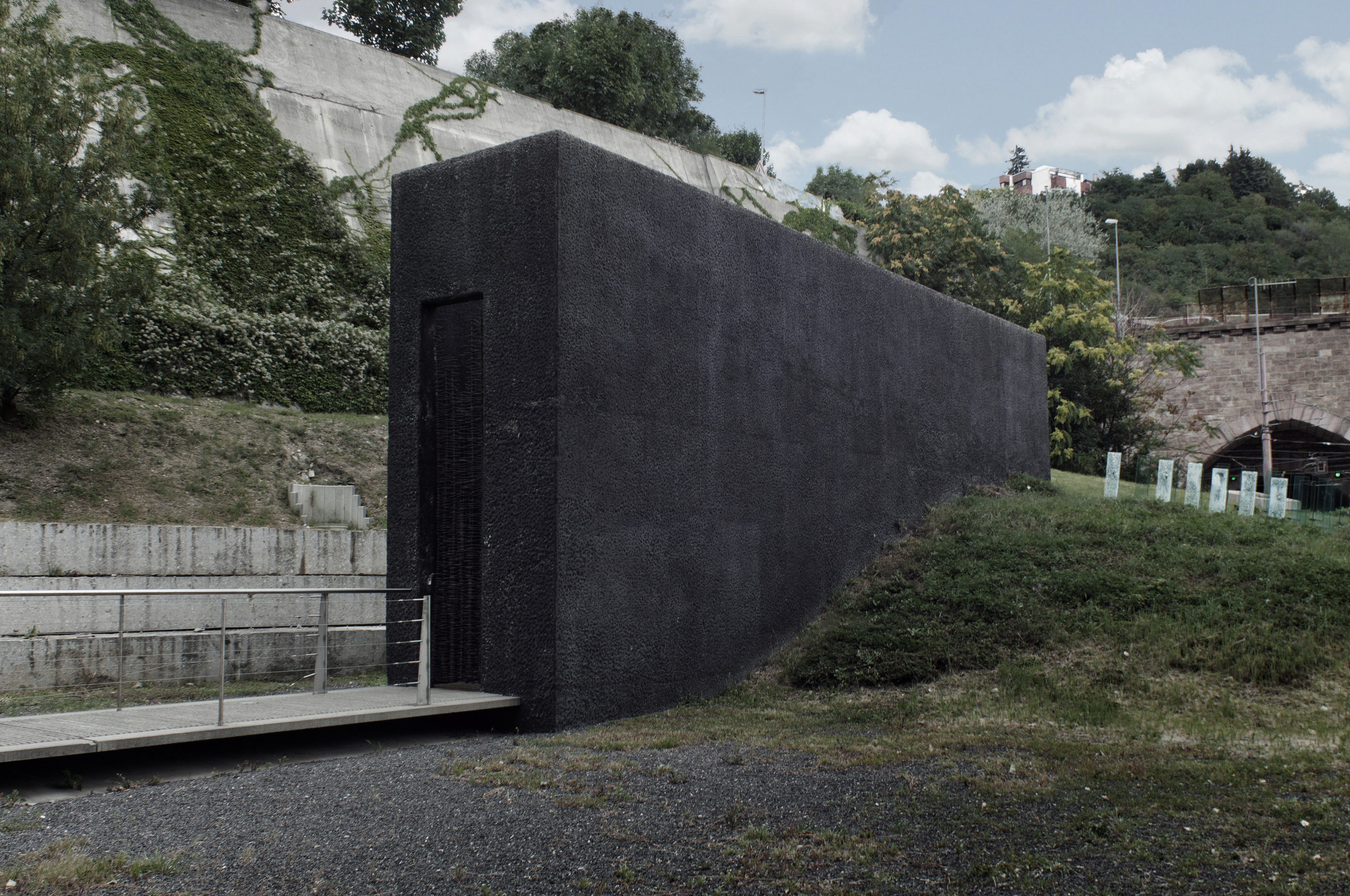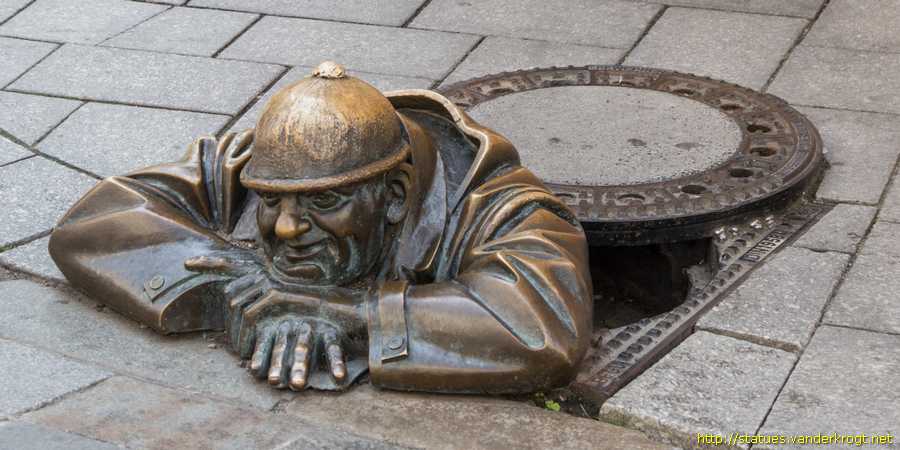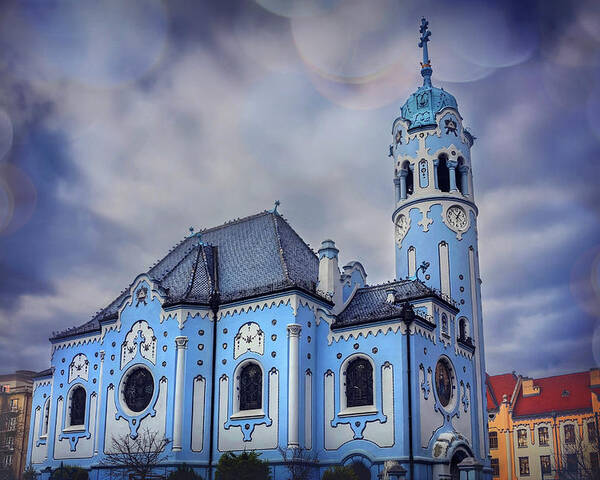TIPS FOR SLOVAKIA
1. Vignette. Immediately after crossing the border stop at the signed office and pay the toll for using Slovakia highways. The shortest duration is for 10 days – €10 payable by credit card. Present your registration and they enter your license plate. Cameras on the highways automatically record your progress.
2. Currency: Euro €
3. Diesel Prices. Average €1.25, about the same as the Czech Republic.
I was in 4 countries in 24 hours on September 29-30th. I left Lednice Castle in south central Czech Republic in the late afternoon, overnighted and saw all the sights in Bratislava, the capital of Slovakia, made a short circuit through the northwest corner of Austria to see a windmill and Neusiedlersse National Park, a joint park in both Austria and Hungary. I then entered the Transdanubia part of Hungary where I saw the Esterhazy Palace and continued on my way to see this small corner of NW Hungary north of Budapest.
Slovakia – Bratislava, Nitra, Trnava, Trenčin September 29-30. 2019
BRATISLAVA (pop 430,000, metropolitan area 650,000)
The capital of Slovakia, is sits on both banks of the Danube River and the left bank of the Morava River near the border with both Austria and Hungary. It is surrounded by vineyards and the Little Carpathian mountains, crisscrossed by forested hiking and cycling trails. The large pedestrian only Old Town is known for its lively bars and cafes. The reconstructed Bratislava Castle overlooks the Old Town and the river.
It is the political, cultural and economic centre of Slovakia. In 2017, it was ranked third richest in the European Union by GDP per person (after Hamburg and Luxembourg City). This is about three times higher than in other Slovak regions. About 1 million tourist visit every year.
History. The first settlement dates to 5000 BC and the first significant settlement was Celtic in about 200 BC with a fortified town and mint. The Romans controlled it from the 1st to the 4th centuries AD and made it part of the Danubian Limes. The Romans introduced grape growing and winemaking is significant today.
The Slavs arrived from the east in the 5th and 6th centuries establishing the Samo’s Empire (623-658), the first known Slavic political entity. It was part of the Kingdom of Hungary from 1000 and was a free royal town in 1405. The Ottomans defeated the kingdom in 1526 but failed to conquer it. It became the capital of Hungary in 1536 part of the Hapsburg Monarchy. The city became a coronation town and the seat of kings and bishops. Between 1536-1830, 11 Hungarian kings and queens were crowned in St Martin’s Church.
The 17th century was marked by the anti-Hapsburg uprisings, fighting the Turks, floods and plagues. It flourished in the 18th century under QueeMaria Theresa becoming the most important town in Hungary – the population tripled and monasteries and mansions were built. After 1783 many central offices were moved to Buda and the nobility followed.
Industry developed rapidly in the 19th century along with banks, the first permanent bridge over the Danube (1891). After WW I, the population was almost equally Hungarian, German and Slovac and many were trilingual. It was incorporated into Czechoslovakia in October 1918 much against the wishes of the non-Slovaks. Many Hungarians fled after 1919. The Slovak government cooperated in deporting 15,000 Jews in WW II. It was taken by the Soviet/Ukrainian army on April 4, 1945 and almost all ethnic Germans were expelled. After the Communist party seized power in 1948, the population was 90% Slovak. It became one of the foremost centers of the anti-Communist Velvet Revolution in 1989. In 1993, it became the capital of the new Slovak Republic.
The historic center has many Baroque palaces. Volkswagen arrived in 1991 taking over Skoda. Now 68% of its production is SUVs, Audi Q7, VW Touareg, body and chassie of the Porche Cayenne.
Devin Castle, Devín. It sits on top of a rock where the Morava River (the border between Austria and Slovakia) joins the Danube. It was an important frontier castle of Great Moravia. It was destroyed by Napoleon’s troops in 1809. It was a ruin until recently renovated.
Devinska Kobyla. In the NM “The Dark Side” series, this 300m-tall peak features forests, hiking and an abandoned military base on the summit.
Botanical Garden University of Komenskeho. In the west of the city, it is more like a park with large trees and shady lanes. €3
Slavin War Memorial. This is a monument and military cemetery for the Soviet soldiers who died in combat against the Nazis in liberating Bratislava and West Slovakia in the spring of 1945. 6845 Red Army soldiers and officers are buried in 6 mass graves and 317 in individual graves. Trapezoidal granite stones in the ground were installed in 2015 and 100 names of victims who died in Red Army hospitals were added in 2016. The monument was unveiled in 2016 to the existing cemetery.
99 steps lead up to a large plaza with the huge 37m high structure consisting of the marble Hall of Farewell (with 8 bronze bas-relief panels on the door illustrating the hardships of WW II, then on the walls, the names of some Slovak cities and dates of their liberation – Dukla 06/10/1944, Lucenec 14/01/1945, Kocice 20/01, Presov 20/01, Zvolen 14/03, B. Bystrica 26/03, Komarno 30/03, Nitra 31/3, L. Mikulas 04/04, Bratislava 04/04, Zilina 30/04). On top is an obelisk with a 7m sculpture of a Soviet soldier hoisting a flag and crushing a swastika with his foot. 3 other sculptures are on the plaza. It sits on top of a hill to the north of the city and has the best views of Bratislava.
The Memorial of Chatam Sófer. A tentative WHS (12/06/2002), it is in a historic 17th century Jewish cemetery (no graves or even a sign that this was a cemetery), with the tomb of the orthodox rabbi Chatam Sofer. It consists of a large hollow rectangular stone block ¼ buried into the hillside with no visible writing. Beside it are 48 (7×7 rows with one missing) glass “grave stones”, about half shattered and the rest clear. You can’t actually enter the gate/fenced area (the sign says only on request with no contact details) but it is very close to the road just before a bus stop. 
Old Market Hall (Stara Trznica). Surrounded by restaurants and stores, this large open space has great white steel girders and a canopy roof. It holds a farmers market and flea market on Saturdays.
Man at Work Sculpture. In the NM “bizzarium” series, this is a bronze man wearing a hardhat half sticking out of a manhole resting his head on his hands on street level. He has a cherubic smile on his face. It is the most popular photo site in the city and the helmet is rubbed shiny

Pamataj! Jewish Memorial. In the NM “Dark Side” series this is an abstract sculpture of welded metal with 2 legs (?), two brass rectangles with abstract faces and hands and all sorts of welded metal bits. A brass Star of David sits horizontally across the top. It has 2 dates, 1935 and 1996 with the name M Lukau. It sits on a polished granite block with an odd chain link fence.

St. Martin’s Cathedral. Built in the 13th – 16th centuries, it was the coronation of the Kingdom of Hungary between 1563-1839. This 3-naved church has a grand chancel with rosettes of crests on the rib vaults and painted floral designs on the ceiling. The choir stalls have unusual carved wood lions, dragons and animals on the arms and high gothic backs. The highlight is the 4 altars in the side aisles – multi –scene painted bas-reliefs surrounded by gothic brass. The stained glass provides a lot of light as the arches of the aisles are the same height as the nave. All the windows have nice tracery at the tops. A 1735 baroque equestrian statue of St Martin sharing his cloak with a beggar is on the right front aisle. Open 9-11:30, 13-18:00
Church of the Elevation of the Holy Cross. Traditional 13th century church with a 15th century pentagonal bell tower and Gothic architecture. It is known for the sculptural masterpieces of Jozef Sartoa. Bratislava’s best known landmark. Part of a complex of medieval buildings forming the former Convent of Poor Clares. The former Catholic church is owned by the city of Bratislava and is used for concerts, exhibition hall and for cultural events.
The nuns of the Poor Clares order came to Bratislava in 1297 and built a church and convent with the support of the king. In 1782, the order was dissolved by the decree of Joseph II, Holy Roman Emperor and the church became a legal academy and school. It is surrounded by buildings and a square on 2 sides and not open to the public.
There are also Clarissine churches in Bamberg, Brixen and Nuremberg.
Church of St. Elizabeth (Blue Church). Built in 1913, this church is light blue with white accents surrounded by a thin dark blue mosaic/metallic silver band. Inside the pews are also light blue as are the accents. It is closed. It is a very popular wedding/baptismal church.


On the sidewalk on the corner in front to the church is a antiabortion monument to the unborn child – a rock with a Slovak inscription in mosaics and a metal sculpture of a snake wrapped around a bird on top. Slovakia is a Catholic country, abortions are completely legal but controversial.
Bratislava Iron Curtain relics and bunkers
Avion Shopping Park. Opened in 2002, it has 170 stores. in east Bratislava, this popular, large, one-level shopping mall has all the usual shops, a architecturally lovely food court with many ethnic and unusual restaurants (one is hummus and couscous), an ice skating rink, a big supermarket, gardens and an IKEA. No cinema.
Slovak areas west of Danube (Petržalka, Jarovce). In the NM “XL” series, this is a southern suburb of Bratislava.
LIMES ROMANUS – The ROMAN ANTIQUE MONUMENTS in the MIDDLE DANUBE (12/06/2002).
Kelemantia: Roman Castellum. About 7kms east of Komarom on the north shore of the Danube, this (like almost all of the Roman Limes) is only a remnant of a ruin – the front 1-2m stone wall, the outline of the rest of the fort, a sign in Slovak, and 2 maps on cement slabs, one of the fort with the buildings outlined and one of the Limes in this area: from west to east Carnitum, Gervlata, Arabona (Gyor) Brigetio and Aquincvm (Budapest) on the south/west side of the Danube; and Kelemantia Iza on the north/east side of the river.
The drive here was a little crazy: narrow pavement, gravel and then a bicycle path along the top of the dike along the river (illegal for motorized vehicles). The only practical way to get here would be to walk or cycle.
On my way to Neusiedlersse National Park I took a route through eastern Austria. I haven’t experienced wind like that for a long time even though this was flat country. There was a huge wind farm. The van was being tossed all over the road. I saw these windmills.
Retz windmills. Retz Austria. Google Maps was of no help but tourist information directed me to the one windmill.
NOMAD MANIA Experiences for Slovakia
Cruise on traditional flatboat on Dunajec river
Play/hear fujara
Taste Bryndzové halušky
NOMAD MANIA Slovakia – Bratislava, Nitra, Trnava,Trenčin
Tentative WHS
Limes Romanus – The Roman antique monuments on the Middle Danube (12/06/2002)
Natural and Cultural Landscape of Danube Region (12/06/2002)
Original Meadow – Pasture Sites of Slovakia (11/02/2002)
Sites of Great Moravia: Slavonic Fortified Settlement at Mikulčice – Church of St. Margaret at Kopčany (30/01/2007)
System of Fortifications at the Confluence of the Rivers Danube and Váh in Komárno – Komárom (12/06/2002)
The Memorial of Chatam Sófer (12/06/2002)
Sights
Bojnice Castle
Bratislava Old Town
Kolarovo Bridge
Trenčín Castle and Old Town
Islands: Zitny ostrov
Borders
Austria-Slovakia
Czechia-Slovakia
Hungary-Slovakia
Slovakia (river border)
XL
Komarom/Komarno
Slovak areas west of Danube (Petržalka, Jarovce)
Railway, Metro, Funiculars, Cable Cars
Slovakia Intercity Railway Experience
Trenčianske Teplice Tram
Museums
Pezinok: Malokarpatske muzeum
Piestany: Balneologicke muzeum
Piestany: Museum of Military History
House Museums/Plantations
Borský Mikuláš: Ján Hollý Birthplace
Košariská: Múzeum M. R. Štefánika
Uhrovec: Rodný dům Ľudovíta Štúra a Alexandra Dubčeka
Castles, Palaces, Forts
Beckov Castle
Budmerice: Budmerice Mansion
Červený Kameň: Červený Kameň Castle
Devín: Devin Castle
Hlohovec: Hlohovec Castle
Smolenice: Smolenice Castle
Religious Temples: Šaštín-Stráž: Basilica of our Lady of Sorrows
Planetariums
Hlohovec: Observatory and Planetarium M.R.Štefánika
Hurbanovo: Slovak Central Observatory
Theme Parks: Podolie: Park miniatúr
Windmills
Holíč: Holíč Windmill (Holic marked)
Festivals
Bratislava Jazz Days
Bratislava: Bratislava Chamber Guitar
Bratislava: Bratislava International Film Festival
Bratislava: Bratislava New Generation-Day FM Festival
Bratislavské Hudobné Slávnosti
Ghosts and Spirits Festival, Bojnice
Piešťany: GrapeFestival
Trenčin: Pohoda
European Cities
BRATISLAVA World Capitals, World City and Popular Town
Tentative WHS: The Memorial of Chatam Sófer (12/06/2002)
Airports: Bratislava (BTS)
Railway, Metro, Funiculars, Cable Cars: Bratislava Trams
Museums
Bratislava-Čunovo: Danubiana Meulesteen Art Museum
Bratislava City Gallery
Bratislava City Museum
Museum of Arms
Museum of Jewish Culture
Slovak National Gallery
Slovak National Museum
Waterworks Museum
Castles, Palaces, Forts
Bratislava Castle
Episcopal Summer Palace
Grassalkovich Palace
Primate’s Palace
Religious Temples
Church of St. Elizabeth (Blue Church)
Church of the Holy Trinity
St. Martin’s Cathedral
Malls/Department Stores: Avion Shopping Park
Markets: Old Market Hall
Monuments
Pamataj Jewish Memorial
Slavin War Memorial
Entertainment/Things to do: Dunaj, Bratislava
Pedestrian Bridges: Kolarovo Bridge
Railway Museums: Bratislava Transport Museum
The Dark Side: Bratislava Iron Curtain relics and bunkers
Bizzarium: Man at Work Sculpture
Zoos: Bratislava: ZOO Bratislava
Botanical Gardens: Bratislava: Botanical Garden
NITRA
Museums: Nitra: Slovak Agricultural Museum
Castles, Palaces, Forts: Nitra: Nitra Castle
TRENČIN
Museums: Trenčin: Trenčin Museum
Castles, Palaces, Forts: Trenčín: Trenčín Castle
Religious Temples: Trenčin: Notre Dame
TRNAVA
Museums: Trnava: West Slovak Museum
Religious Temples: Trnava: Basilica of St. Nicholas
Villages and Small Towns
SKALICA
BOJNICE
Castles, Palaces, Forts: Bojnice: Bojnice Castle
Zoos: Bojnice Zoo
KOMÁROM
Tentative WHS: System of Fortifications at the Confluence of the Rivers Danube and Váh in Komárno – Komárom (12/06/2002)
Museums: Danube Museum
Castles, Palaces, Forts: Komarno Fortress
